Wood
Perhaps the most commonly used flooring material is wood. Due to its nature, wood flooring creates a unique atmosphere of coziness in any room.
However, it is worth considering that wood has low resistance to moisture, so the floor made of this material must be carefully treated with special water-repellent and antifungal agents.
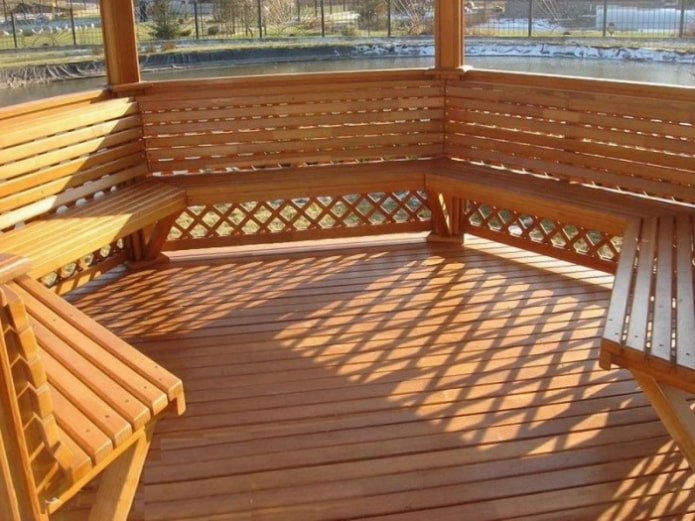
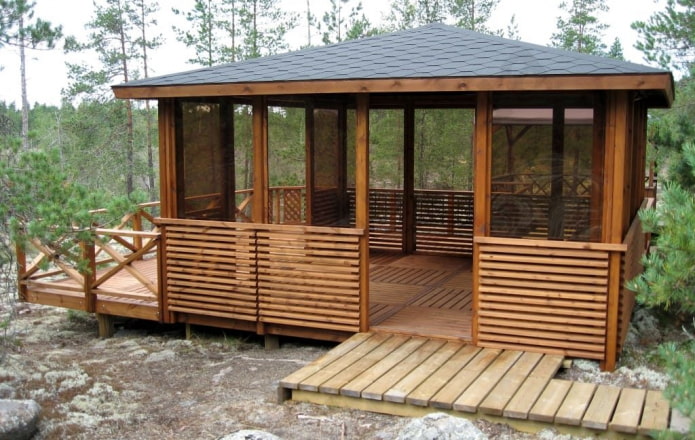
Concrete
If the gazebo has an open structure, then concrete can be used as a floor material. Unlike the above-mentioned wood, it has much greater resistance to the external environment and can serve for many years. In addition, concrete is a stylistically neutral material, so it can become part of almost any design solution.
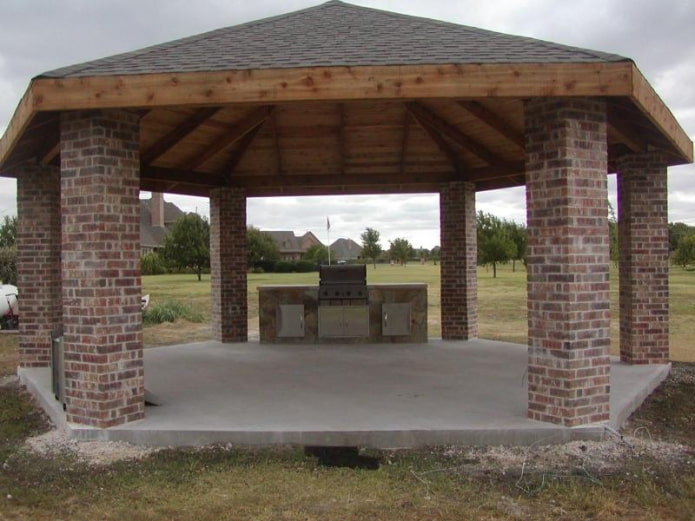
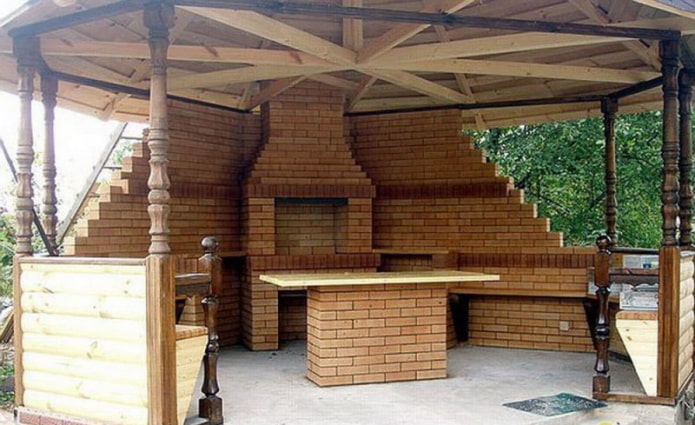
Porcelain tiles
In addition to concrete, it is worth considering the so-called porcelain tiles, which are mounted on a concrete surface. Like concrete, porcelain stoneware is quite unpretentious to external conditions, but is more aesthetically pleasing due to its relief.
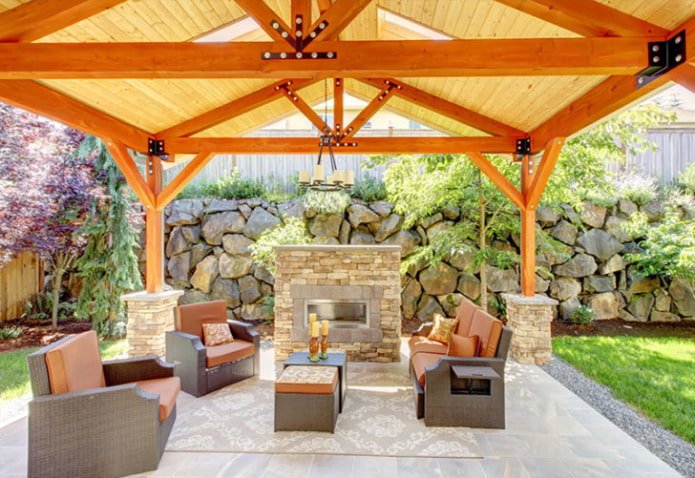
Stone
According to many owners of country houses, stone is one of the best materials for the floor in a gazebo. On the one hand, it is resistant to external influences, on the other hand, it has an excellent appearance.
However, it is worth considering that stone is a fairly expensive material, and its processing and installation require special skills.
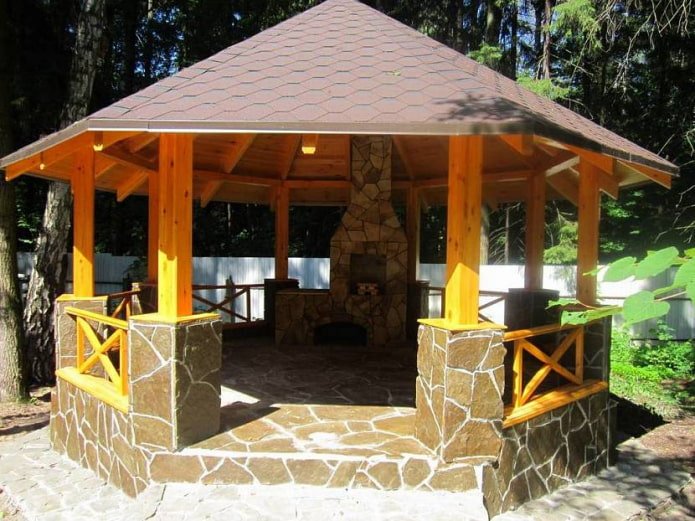
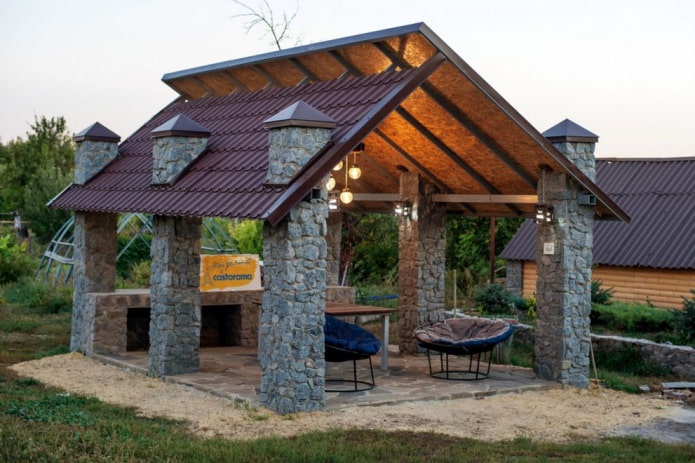
Paving slabs
As an alternative to natural stone, you can consider paving slabs. Its main advantage is a large selection of shapes and colors, which allows you to lay out almost any pattern on the floor. But you need to remember that laying paving slabs takes time and compliance with the process technology. Otherwise, the tile may begin to crack over time, and the evenness of the coating will be disrupted.
Advice. A floor made of paving slabs goes well with a gazebo made of metal.
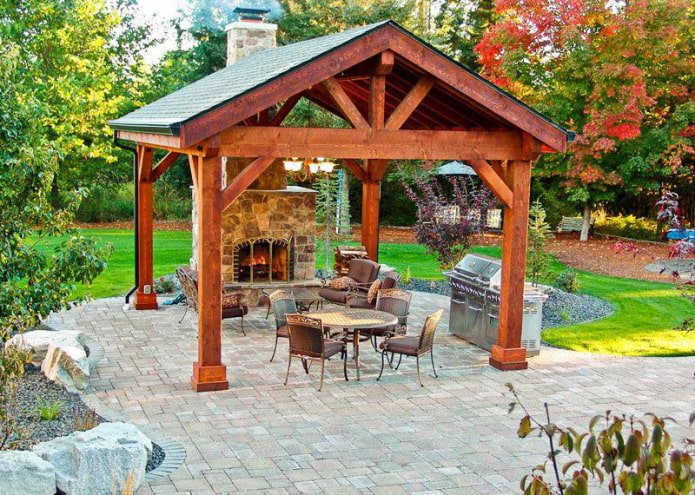
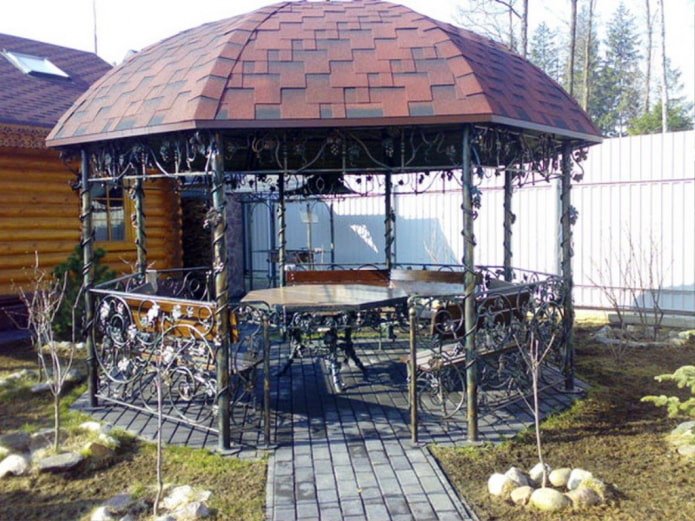
Bulk materials
Recently, gazebos with floors made of bulk materials, most often gravel, have become quite common. This option is best suited for open gazebos, as well as in cases where the floor needs to be laid in literally a matter of hours. However, this solution has quite a few disadvantages:
- Grass will grow through gravel or other bulk material.
- The bulk material will be carried all over the area.
- You need to be prepared for the fact that furniture on such a floor will be extremely unstable.
Nevertheless, gravel and other bulk materials can be used as a covering in a gazebo, provided that you understand the possible disadvantages.
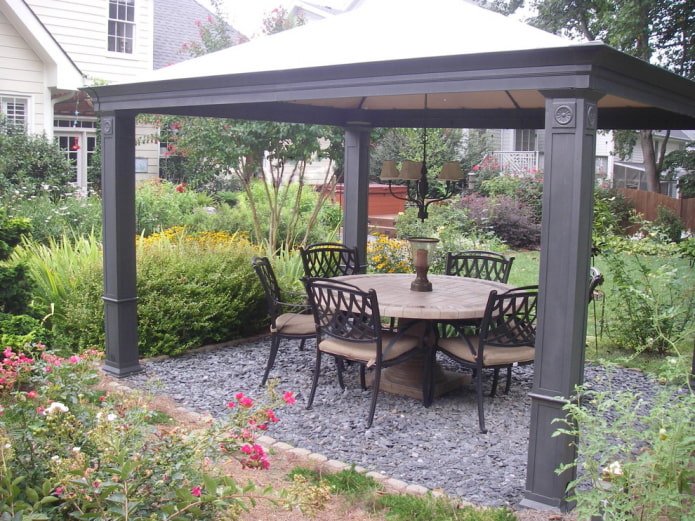
Rolled lawn
It is worth mentioning separately such an original material for the floor in the gazebo as rolled lawn. Yes, we are talking about the most common lawn, which is used in almost every summer cottage.
When choosing this option, it is worth considering that, unlike all other materials, the lawn is demanding in maintenance. Therefore, it will have to be mowed and watered at least once a week.
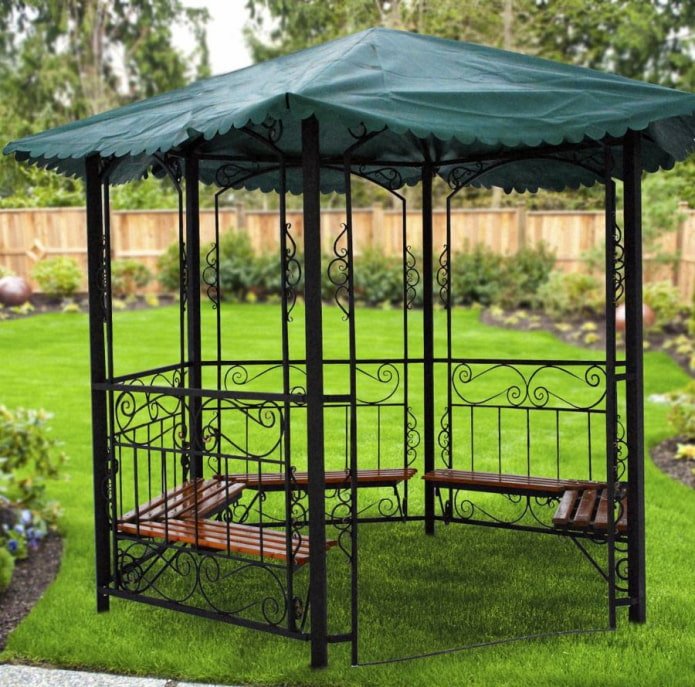
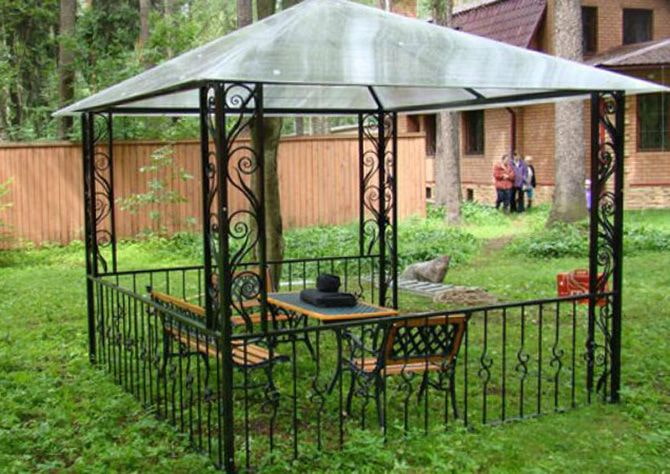
Rubber crumb
Sometimes you can find gazebos with a floor made of rubber crumb, which is often called “soft asphalt”. It is worth mentioning that rubber crumb itself is not used, instead it is laid on top of another rough material.
Please note! Rubber is a waterproof material, so when using this material, you need to ensure that water flows off the floor and does not accumulate in the middle as a puddle.
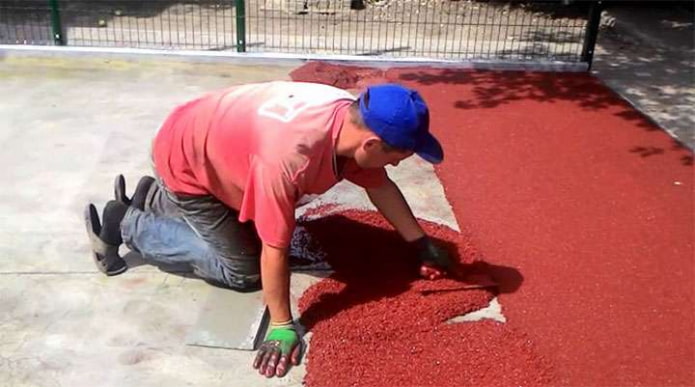
To summarize, I would like to note that a huge variety of different materials can be used as the floor of the gazebo, each of which has its own advantages and disadvantages. Therefore, when choosing a material, you should equally focus on your own aesthetic preferences and on the operational characteristics of the selected material.
Now reading:
- Comprehensive Guide to Dacia Pre-Owned Vehicles
- Secrets of a harmonious combination of curtains and bedspreads in the bedroom: 5 simple recommendations.
- Ideas and photos for decorating a barbecue area at a summer house: how to do it better.
- Stylish and Practical Ways to Cover the Joint Between a Countertop and a Backsplash
- Corner Bathtub in the Interior: More Than 50 Photos and Creative Design Ideas